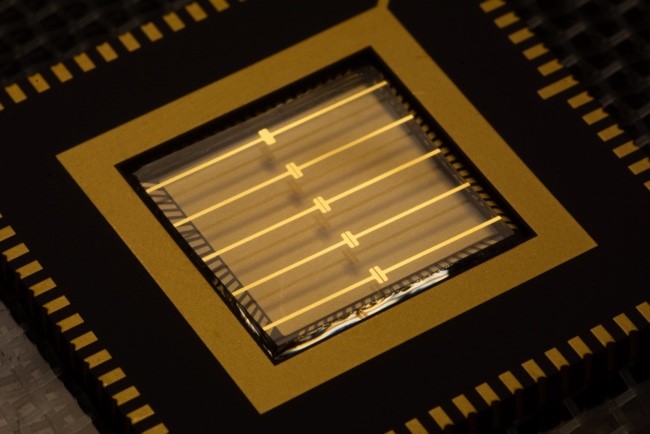
Sep 20, 2023
Newly arrived at Georgia Tech, Associate Professor and Georgia Research Alliance Distinguished Investigator Jason Azoulay of the School of Chemistry and Biochemistry and the School of Materials Science and Engineering has put together two interdisciplinary and mult-institutional teams that have landed prestigious awards from the National Science Foundation (NSF).
The NSF’s “Designing Materials to Revolutionize and Engineer our Future” (DMREF) program is the agency’s principal vehicle to continue the momentum of the decade-long Materials Genome Initiative. This high-profile program seeks to take advantage of the power of machine learning and chemical synthesis to develop new functional materials.
Prof. Azoulay’s team will collaborate on a project titled “Organic Materials Architectured for Researching Vibronic Excitations with Light in the Infrared”, with a delightful acronym (“MARVEL-IR”) and a very serious purpose: to harness an under-utilized part of the electromagnetic spectrum for problems in energy, sensing, information science, manufacturing, and other fields. We’re all familiar with infrared radiation (heat lamps, for example). However, current semiconductor technologies that absorb and convert this light efficiently to electrical signals require complex manufacturing, high costs, cooling, and lack compatibility with silicon electronics, attributes that remain prohibitive for their widespread usage and the development of critical emerging technologies.
The Azoulay laboratory creates novel organic polymers that address these challenges, and the MARVEL-IR team will explore and develop these materials into functional devices. The collaborating investigators include colleagues Emma Hu> (Georgia Tech Materials Science and Engineering), Matthew Sfeir (City University of New York), Tse Nga Ng (University of California San Diego), Bryan Wong (University of California Riverside), Jarrett Vella (Air Force Research Laboratory), and Philippe Berrourad (Brilliant Matters, Inc.).
In response to the NSF’s identification of Growing Convergence Research (GCR) as one of its 10 Big Ideas, Prof. Azoulay is also leading a program titled “Collaborative Research: GCR: Convergence on Phosphorus Sensing for Understanding Global Biogeochemistry and Enabling Pollution Management and Mitigation.” GCR aims to foster deeply integrated interdisciplinary approaches to solving important societal problems, and the Azoulay-led team is a great example. This project brings together supramolecular and inorganic chemistry (Amar Flood, Indiana University and Valerie Pierre, University of Minnesota), polymer science, soft-matter electronics, and electrical engineering (Jason Azoulay, Geogia Tech and Tse Nga Ng, University of California San Diego), and environmental and marine science (Alan Shiller, University of Southern Mississippi, and Satoshi Ishii, University of Minnesota).
Phosphorus pollution is caused by large-scale use of agricultural fertilizers; it can have very harmful effects on global biological productivity, food resources, energy generation, and climate. Yet there currently exists no way to reliably, accurately, and inexpensively measure the amount of phosphorus out in the real world. These investigators will use the $3.6MM award over five years to give the world the tools needed to understand this problem, a necessary first step to solving it.
For more information on the Azoulay laboratory, see: https://azoulaygroup.org/.